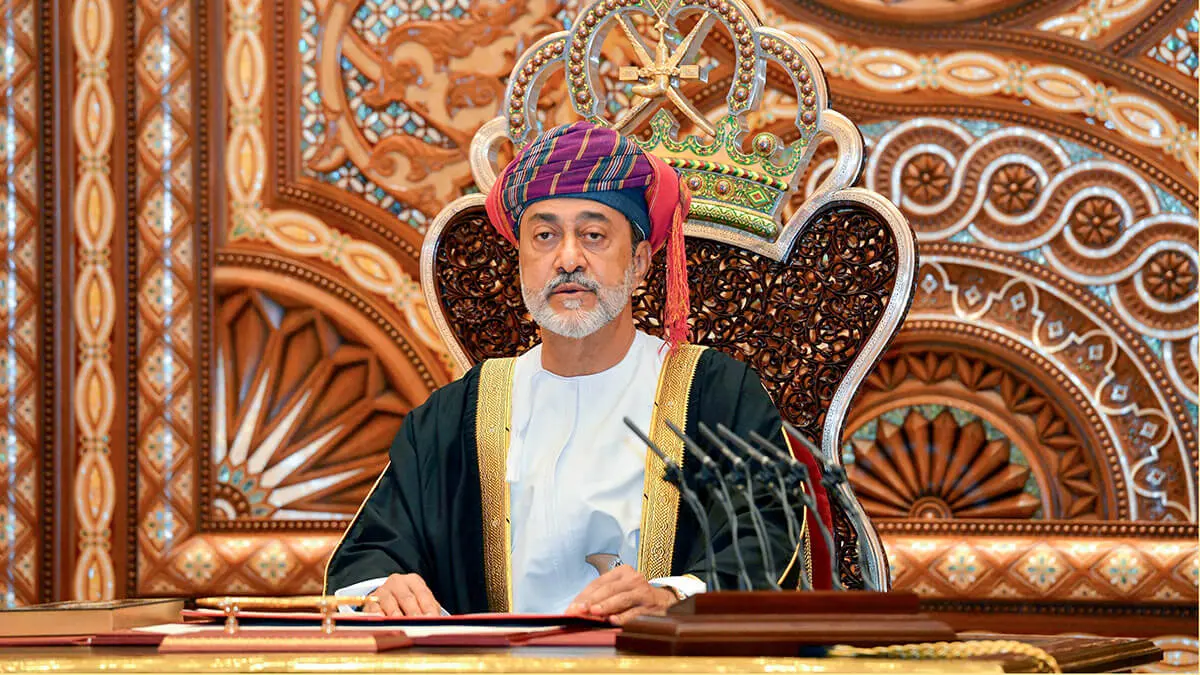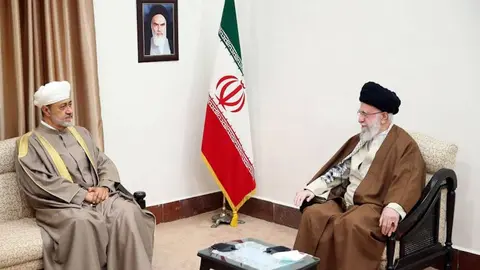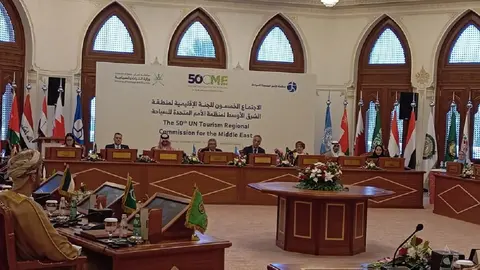Eid protest in Oman

It is too early to say whether the Omanis’ reactions to the rally of the Al-Mashani tribe in Dhofar constitutes a kind of popular referendum on the predominance of the nationalist spirit over traditional tribal impulses.
Putting aside some of the tense reactions, one can take note of the general mood which prevailed on social media and its focus on national cohesiveness, away from regionalism. The prevalence of this character is to the credit of Omanis.
The large gathering was in solidarity with some members of the influential tribe of Al-Mashani Al-Hakli in the Dhofar region who performed Eid al-Adha prayers according to the Umm Al-Qura calendar of Saudi Arabia, that is, at the same time as the celebration of the Eid in Mecca. The official celebration of the Eid in the Sultanate of Oman was delayed by one day as the sighting of the crescent, which determines the onset of the month, was not confirmed. In previous years, the sultanate has issued official statements from the ministry of endowments and religious affairs aligning the Eid calendar with that of Umm Al-Qura. There was a one-day gap this time between the two calendars over the date of Eid al-Adha celebration. Subsequently, some Omanis feted the Eid a day before its official celebration in the sultanate. Security forces moved to arrest two leading figures from the Al-Mashani tribe, without charging them. But it was clear that the authorities considered that holding Eid prayers a day later than officially set was a transgression warranting government intervention. The tribe responded by holding a protest rally, which further incited emotions.
Perhaps it is a bit of an exaggeration to talk about sedition. The issue of the Eid prayers was a subject of protest by the Mashani tribe. Certainly, it was more than a question of compliance with calendar set by the state for national and religious holidays. Worshippers could have celebrated the holiday in their homes or in their private majlis, without giving the impression of challenging the authorities. But the prayer, then the subsequent gathering and the statement that was issued, as well as the distribution of images of the event revealing the size of the gathering along with supportive and critical comments, all indicated that we were dealing here with more than a protest related to a religious event.
Dhofar is not unrelated to all of this. The region has witnessed many rebellions and protest movements. In fact, it can be said that Dhofar’s problems have played the largest role in shaping the type of governance in Muscat.
One of the most important reasons for the late Sultan Qaboos’ move to depose his father, Sultan Said bin Taimur, was the deterioration of the political, social and military situation in Dhofar.
To be accurate, one must note that Sultan Said himself had realised the importance of the region, and had spent most of his time in Salalah, where he married twice from the Al-Mashani tribe. Al-Mashani were the maternal uncles of the late Sultan Qaboos.
Omani Renaissance, which became the theme of the movement for change after the accession of Sultan Qaboos to the throne in 1970, largely included an economic reform process in Dhofar.
The late sultan was able to contain the region’s crisis and change the course of the war there, so the situation stabilised after 1974. State building in Oman was strictly centralised in Dhofar and other regions of the sultanate. The regional and economic protests in the sultanate, which were not confined to Dhofar, were eventually contained and Oman embarked on a major development process similar to that of its Gulf neighbours.
Some Omanis whom I met inside and outside the sultanate tell me that the protest movement that accompanied the so-called “Arab spring” had its historical roots in Dhofar and other regions of northern Oman, such as Sohar.
The social dimension was present, and there were hints of religious influence. But what I heard from young people in Salalah and Sohar at that time had to do primarily with jobs and providing employment opportunities for university graduates. It can be said that the Omani state was able to contain these protests with great agility, as it dismissed many of the officials who were considered to be the cause for the faltering of the state effort or suspected of having withheld important information from Sultan Qaboos.
During the past few years there have been increasing signs of sectarian motives behind any resumption of protests. This was quite expected, not because Omanis are sharply divided along sectarian lines, but because the Iranian factor that fuels sectarianism in the region has become more prominent, especially in the civil wars gripping major countries of the region such as Iraq, Syria and Yemen. It is difficult for the Omanis to face a sectarian civil war on their borders with Yemen without being affected and forced to re-interpret their own social situation in its light. The tone of the clamour for greater rights in Dhofar changed, echoing some of the sixties’ talk about nationalism and colonialism. Before now, there have been rarely-heard statements about Shafi’is, Ibadis and Shia.
This change, as some Omanis told me, stemmed from wariness of new attempts to impose the dominance of any one sect over the other based on its place and influence in society.
One cannot compare the resilience of the state in Oman, its authority and its serenity in the face of internal and regional challenges to other examples in the region where certain groups were able to impose their hegemony based on sectarian or religious motives. The Lebanese example illustrated by the dominance of Hezbollah, the Iraqi example of the Popular Mobilisation Forces, if not indeed the whole the Iraqi government, and the Yemeni example, represented by the Houthis’ monopoly of power and their destruction of the traditional sectarian balance between the Shafi’is and the Zaidis, are three prominent examples that raise concerns about the expansion of this minority-based model to become the prevailing pattern the region. But comparing examples is one thing, while speculating about possible future ramifications of ongoing developments in another matter altogether.
These facts help explain what happened in Oman a few days ago and why tensions arose over the issue of the Eid, while in the past compliance or non-compliance with the Umm Al-Qura calendar used to pass without sparking any problems. Some see in the official political positions on Iran and on the situation in Yemen, as well as the expressions of solidarity issued by the country’s highest religious authorities, backing the Houthis in their attacks on international navigation under the pretext of supporting Gaza, signs of a deeper change in sectarian relations in the country.
Perhaps the Mashani tribe protesters wanted, especially in the statement they addressed to the authorities, to recall, albeit obliquely, the reasons for the protest. The first paragraph of their statement indicated their continued adherence to the Umm al-Qura calendar, signalling that there is no going back after the incident. The second paragraph contained a complaint addressed to the highest level of government, which indicated their faith in Sultan Haitham bin Tariq as a fair arbiter able to avoid what they see as an arbitrary imposition by any particular group of its dominance in the state, by his shifting to a more balanced pattern of coexistence between the country’s different sectarian components.
They also signalled their concern that matters might begin to unravel with the imposition of the Eid calendar and the arrest of those who did not comply with it. But this could be the beginning of other moves, as happened in more than one Arab country, including in some which used to be proud of the sectarian and ethnic balance in their midst, and even of their secularism.
Tribes, whose relationship with the ruling family has been entrenched through inter-marriage and allegiance, as part of the process of Omani non-sectarian national state-building after 1974, have witnessed disturbing developments unfolding before their eyes. These started with the transformation of Dhofar’s roads into passageways for the Houthis and the return of talk about the importance of the Alawi family with the establishment of mosques bearing such names as the former foreign minister Yusuf bin Alawi. Perhaps the most dangerous risk ahead is to see these tribes search for a cross-border religious authority, as happened when allegiances splintered in the neighbouring Yemeni cities of Al-Mahra and Hadramaut. Geography is stubborn regardless of the barriers and walls that are erected.
The video of the Al-Mashani tribal gathering included interesting images of the nearby parking lots showing the large number of participants. But any observer can also see the prevalence of modern and expensive cars. The economic dimension which had triggered previous protests has become less pertinent today, with the Omani state meeting its promises to provide jobs to young Omanis. This was clearly a different kind of protest as times have changed.
Article previously published in The Arab Weekly



